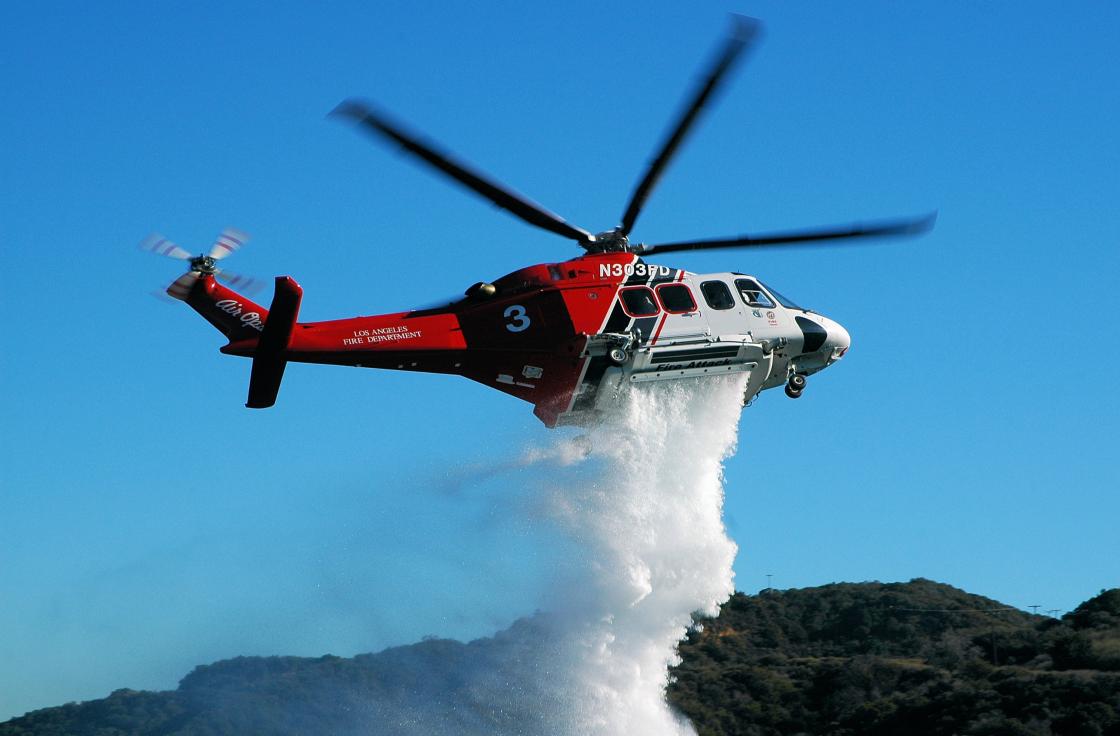The versatility of helicopters makes them an ideal mode of transportation to remote land-based and off-shore locations both for resort visitors and for emergency response operations. The GACAR Part 138, covers all aspects of civil aviation activity in KSA along with local building/fire codes and NFPA 418. SBC 201 provides definitions for the following in relation to helicopter operations:
Helipad
A structural surface that is used for the landing, taking off, taxiing, and parking of helicopters.
Heliport
An area of land or water or a structural surface that is used, or intended for use for the landing and taking off of helicopters, and any appurtenant areas that are used, or intended for use, for heliport buildings or other heliport facilities.
Helistop
The same as heliport, except that no fuelling, defuelling, maintenance, repairs or storage of helicopters is permitted.
GACAR Part 138 (section 138.603) details the rescue and firefighting requirements at heliports. The objectives of the rescue and firefighting service is to save lives in the event of an aircraft accident or incident occurring at, or in the immediate vicinity of an aerodrome. GACAR 138 details the level of protection to be provided for rescue and firefighting based on the overall length of the longest helicopter normally using the heliport, and in accordance with the appropriate firefighting category (H0-H3), which covers the maximum fuselage length (up to but not including 24m and maximum fuselage width 3m).
Extinguishing Agents
GACAR Part 138 calculates the category for the water tank and foam system based on the maximum fuselage length and fuselage width which is detailed in Table I-1 of GACAR Part 138. Again, the selection of foam compounds to be used must consider any potential risk/harm to the environment.
Where operational response could be limited or delayed on a land-based surface helipad the primary media may be applied as a solid stream using a fixed foam application system (FFAS) in the form of a remote fixed monitor system. This would be supplemented using a portable foam application system. This allows additional foam dispensing equipment to be transported to the incident, or accident location, on an appropriate emergency response vehicle.
For the FFAS, GACAR Part 138 Table I-3 states that the minimum useable amount of primary media and complementary agents provided at a H3 Category helipad, where back-up specialist fire services are remote from the helipad, should be:
- Water: 4,000L
- Discharge rate foam solution: 800L/min
- Complementary Agent – Dry Chemical Powder: 90kg
- Complementary Agent – Gaseous Media: 36kg
This is based on a discharge duration of 5 minutes. The foam will meet International Civil Aviation Organization performance level B requirements.
Where applicable surface level heliports with primary media applied as a solid stream using a portable foam application system (PFAS) should comply with Table I-2 from GACAR Part 138. For a H3 Category Helipad, should be;
- Water: 1,600L (Level B), 1,100L (Level C)
- Discharge rate foam solution: 800L/min (Level B), 550L/min (Level C)
- Complementary Agent – Dry Chemical Powder: 90kg
- Complementary Agent – Gaseous Media: 36kg
As per the guidance in Table 9.2 of NFPA 418, for a H3 Heliport, at least one portable fire extinguisher per landing and take-off area, having a minimum 30-A:240-B rating should be provided.
Each heliport shall have at least two access points for firefighting/rescue personnel. The access points shall be located at least 90 degrees from each other as measured from the centre of the landing pad. Fences shall not prevent access by firefighting/rescue personnel.
At least two means of egress that lead to a public way shall be provided from the landing pad. The egress points shall be located at least 90 degrees from each other as measured from the centre of the landing pad. The egress points shall be located remotely from each other, not less than 9.1m apart. No two egress points shall be located on the same side of the landing pad.


